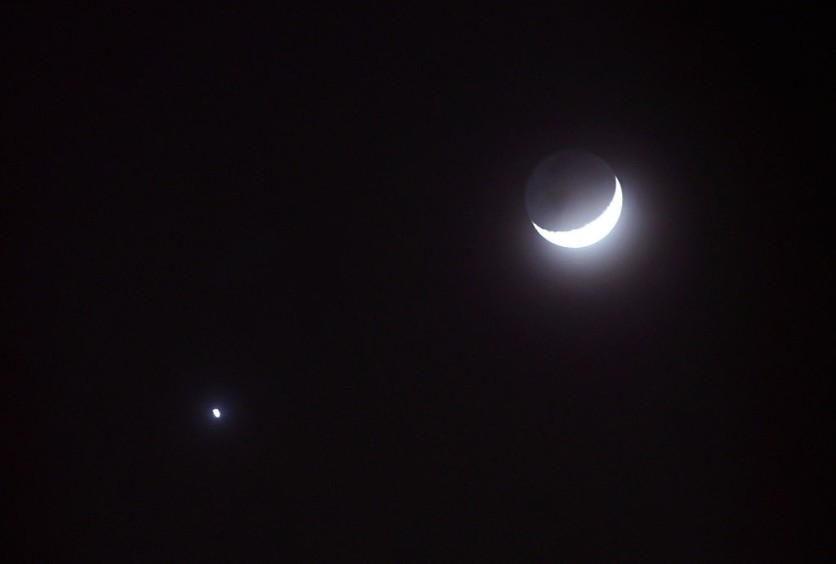The skies before the sunlight sneak in on Tuesday, July 26, is a dazzling spectacle you surely don't want to miss!
The thin crescent moon will be seen above Venus on Tuesday just before daybreak if you look to the east-northeastern sky, according to Space.com's report.
Dazzle your early Tuesday morning by reveling under the glow of the moon and Venus!

How And Where To Watch?
According to astronomer Chris Vaughan of Astrogeo.ca, who creates Space.com's Night Sky calendar in collaboration with Simulation Curriculum, Venus will be glowing at a dazzling magnitude of -3.9, only a few finger-widths to the lower right of the old moon!
Space.com noted that lower numbers represent brighter objects on the astronomical magnitude scale. With a pair of binoculars, the moon and Venus will appear as close enough to lighten up the morning skies!
Alhena, Pollux, Castor, and Tejat Posterior are a few of the stars of the Gemini constellation that will brighten around the duo if observers catch them just as they rise at roughly 4 a.m. local time.
Your precise location will determine the exact timing of the event, so you should check a skywatching app like SkySafari or other software to find out when it will happen in your location.
The moon will enter its new moon phase around 1:55 p.m. on Thursday, July 28. EDT (1755 GMT). It will then approach Mercury on Friday, July 29, just after sunset, as noted by Space.com.
Asteroid Juno's apparent path change on Thursday is another skywatching spectacle to keep an eye out for this week.
According to Vaughan, the main belt asteroid Juno will slow to a standstill as it crosses past the western Pisces background stars in an eastward prograde direction.
After that, Juno will begin a retrograde cycle until late October.
Read also : 'Largest Canyon in The Solar System:' ESA's Mars Express Snaps Stunning Views of Mars's Grand Canyon
Apps To Help You Locate Venus
Here are some of the recommended apps that you can download. These apps will be beneficial in helping you locate Venus and will also direct you to the best spot for viewing!
- Starwalk 2
- Dark Sky Meter App
- Star Chart
- Dark Sky
- Telescope HD
- SkyEyelAstronomy
- Google Sky Map
- SkySafari
- Meteor Shower Calendar
Related Article : 'Hubble vs James Webb Telescope:' Is NASA Webb's Deepest Image of the Universe Stunningly Clearer?
This article is owned by Tech Times
Written by Joaquin Victor Tacla
ⓒ 2025 TECHTIMES.com All rights reserved. Do not reproduce without permission.




